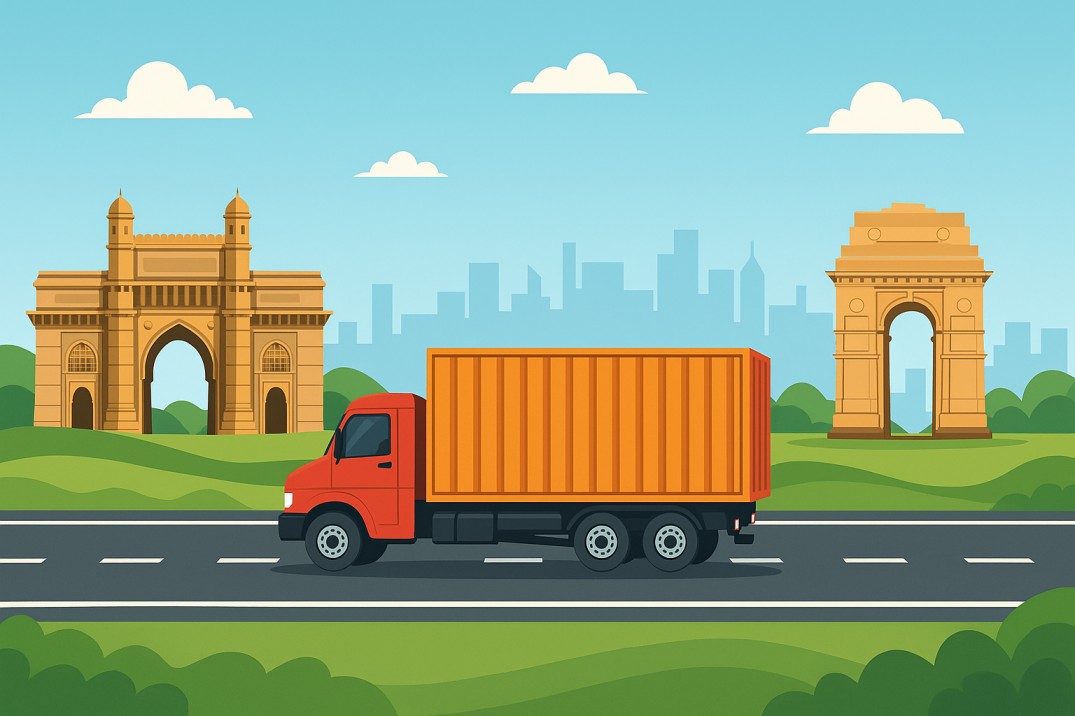 India’s road transport network plays a vital role in connecting major cities. One of the busiest and most commercially significant routes is the Mumbai to New Delhi transport service. This corridor links the financial capital of India with the national capital, facilitating the flow of goods, trade, and economic growth. With increasing industrial demand, expanding e-commerce, and robust manufacturing, this transport route has become a critical artery for freight movement. If you’re looking for a transport service in Mumbai, Bhiwandi, or Navi Mumbai, understanding this route can help you plan better and optimize costs.
India’s road transport network plays a vital role in connecting major cities. One of the busiest and most commercially significant routes is the Mumbai to New Delhi transport service. This corridor links the financial capital of India with the national capital, facilitating the flow of goods, trade, and economic growth. With increasing industrial demand, expanding e-commerce, and robust manufacturing, this transport route has become a critical artery for freight movement. If you’re looking for a transport service in Mumbai, Bhiwandi, or Navi Mumbai, understanding this route can help you plan better and optimize costs.
Market Size: Volume, Trips & Truck Flow
The Mumbai to New Delhi transport service contributes a substantial share to India’s freight logistics sector.
- Annual Cargo Volume: Over 0.8 million metric tons transported annually.
- Number of Trips Daily: Approx. 750 – 1,100 trips are made each day between the two cities.
- Trucks Plying the Route: On average, 12,000+ trucks operate on this corridor every month, involving a mix of light, medium, and heavy-duty vehicles.
This makes it one of the busiest long-haul commercial routes in India.
Top 10 Materials Transported from Mumbai to New Delhi
The route facilitates a wide range of goods, including:
- Pharmaceutical Products
- FMCG Goods
- Electronics & Appliances
- Garments & Textiles
- Industrial Machinery
- Auto Parts
- Chemicals & Paints
- Furniture & Fixtures
- Processed Food Items
- Construction Materials (Tiles, Pipes, Sanitaryware)
These items dominate the cargo flow due to consistent demand across manufacturing and retail sectors.
Top 3 Trucks in Demand on the Route
To cater to diverse goods and load requirements, the following trucks are frequently used:
- Mini tucks/ Load share– Ideal for 1-2 ton loads; used for high-value, low-volume goods.
- LCV – Most preferred for medium loads with multiple drop points.
- HDT Trucks – Preferred for full truck loads like construction goods. Bulk removals or industrial machinery.
Seasonal Freight Rate Trends
Seasonal demand significantly affects the freight pricing on the Mumbai to New Delhi transport service.
High Freight Season:
- September to December (Festive season & pre-winter stock movement)
- Freight rates increase by 10-20% due to peak demand.
Low Freight Season:
- May to July (Monsoon disruption & low retail demand)
- Rates drop by 5-15%, especially for non-urgent shipments.
Freight Rates for Different Truck Categories
Here’s a detailed breakdown of current freight charges on the route:
| Truck Type | Freight Charges |
| Load Share | ₹5.5 – ₹8 per KG |
| Mini Trucks (1–2 Ton) | ₹22,000 – ₹32,000 |
| Light Trucks (3–7 Ton) | ₹38,000 – ₹48,000 |
| Medium Trucks (8–15 Ton) | ₹55,000 – ₹75,000 |
| Heavy Trucks (Taurus & Trailers) | ₹80,000 – ₹1,15,000 |
Note: Rates vary based on urgency, route conditions, and type of goods.
Preferred Route and Transit Time
The most followed route by freight trucks on this route is:
Mumbai → Surat → Udaipur → Ajmer → Gurugram → New Delhi
- Distance: ~1,450 km
- Transit Time:
- Mini Trucks & LCVs: 3-4 days
- Heavy Trucks: 4-6 days
Trukky’s Role in Optimizing Mumbai to New Delhi Transport
Trukky, a tech-enabled transport aggregator, simplifies freight booking and ensures reliable deliveries across India.
- Shipment Tracking: Smart tracking using Fastag powered by NLDSL.
- Instant Pricing: Transparent, market-driven rates.
- Digital Booking: Book transport services online anytime.
- Multi-city Pickup: Flexibility for consolidated loads.
- Insurance Options: Available for full truck and part-load shipments.
With its advanced platform, Trukky makes finding a transport service near me fast and affordable.
Conclusion
The Mumbai to New Delhi transport service remains one of the most sought-after lanes in India’s logistics network. Whether you’re looking for a transport service in Mumbai, Navi Mumbai, Bhiwandi, or simply typing transport service near me, understanding the dynamics of this route helps make better freight decisions. With the right logistics partner like Trukky, businesses can enjoy timely deliveries, cost savings, and peace of mind.
Whether you are moving industrial goods or retail cargo, this route ensures seamless connectivity, thanks to evolving infrastructure and technology-driven logistics solutions.


